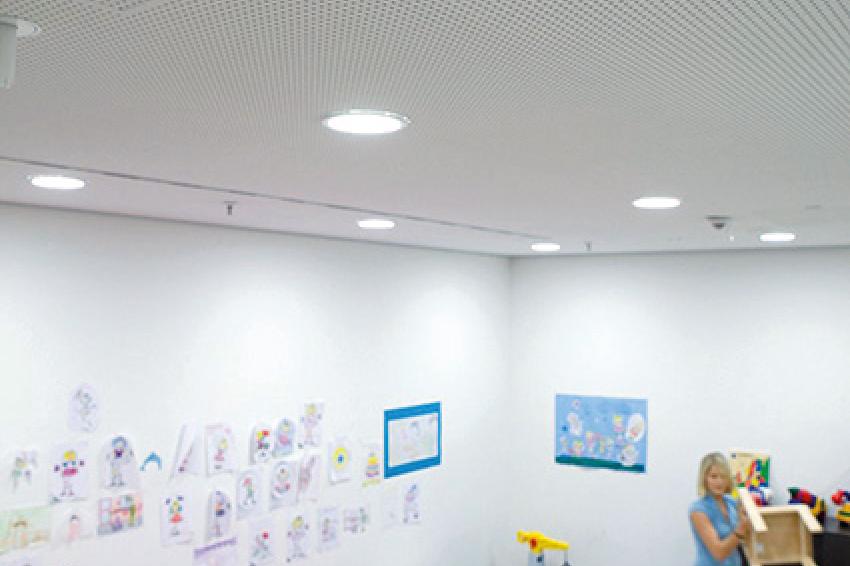Reducing False Alarm Rates Due to Electromagnetic Pollution
False Alarms
The ability to detect smoke and fire as early as possible is indisputably by far the most important feature of any fire prevention system and its detectors. Detection in a very early stage of a beginning fire allows the operator to react before the fire can spread, thus greatly reducing the risk of bodily harm and loss of valuable assets. So, in case of a fire, no time should be wasted to alarm people and organize evacuation of affected areas. However, sometimes fire detectors are wrong and false alarms just are a reality. Given the potentially devastating effect of a fire you might think that in case of doubt you should rather condone or tolerate a false alarm than miss a real fire. But false alarms come at a huge cost.
In a production plant for example, a false alarm will in almost any case lead to an interruption of machine and assembly line operation. In today‘s just in time supply chains this can easily mean that a supplier cannot ship in time, also bringing his customer‘s production to a halt. So a simple false alarm can have very severe consequences and even lead to the loss of important customers. Moreover, a large number of false alarms can easily lead to immunity against such alarms resulting in people failing to comply with evacuation instructions in case of a real fire.
But still, protecting human life is more important and should have priority in case of doubt. This is certainly true. And it is also why it is so important to take the doubt out of the equation. Fire detectors do not only need to reliably detect smoke and heat, but they must just as reliably make a decision about whether what they detect is really smoke from a fire or just a disturbance value such as water vapor, dust or cigarette smoke. Visible disturbance values like these account for one out of four false alarms of fire detection systems, the majority of the rest being attributed to defects, poor maintenance or incorrect positioning. There are solutions to the problem of visible disturbance values such as Bosch‘s Dual Ray technology which uses two different wavelengths to detect smaller and larger particles. This allows the detector to reliably differentiate between smoke and such disturbance values, substantially reducing the false alarm rate.
The Role of Electromagnetic Pollution
But visible disturbance values are just one side of the coin, invisible ones being the other. It is estimated that between 20 and 30 percent of today’s false alarms have an undetermined cause (BRE-Study: “The causes of false fire alarms in buildings – 2014”). Research has shown that electromagnetic pollution is probably the most important contributor to these numbers. Electromagnetic interference (EMI) has always been well understood in the industrial sectors where heavy machinery and a lot of inductive loads exist. But also office and other modern buildings are more and more equipped with complex technical infrastructures, and the ever increasing use of wireless technologies adds to this. It has been reported that even defects in nearby ceiling loudspeakers or lamps have led to false alarms. Also, installing photovoltaic systems on the roof of an existing building can disturb the smoke detectors on the top floor, if the cabling is very close to the fire detectors. This is more likely to happen during daytime than at night, making it even more difficult to find the root of the problem. Specifically in older buildings, unsuitable cable routes can add to the problem.
The primary and most obvious solution to the problem with electromagnetic pollution is to move the detectors away from the magnetic sources. However, this is more easily said than done, as the installer does typically not know about critical pollution values and may even not be aware of a potential source of such pollution. Today‘s buildings are characterized by a complex electric infrastructure supporting building technologies such lighting or air conditioning, office equipment, telephony, safety and security systems and more. And while each of these systems itself can be both a polluter and a victim, add to this the effect of the complex maze of electrical wiring. Cables can act as antennas, propagating environmental electrical noise to their termination points. And while they are not a direct source of EMI, they still are an inductive medium and thus have the potential to couple electrical energy between wires or systems. Using shielded cable will reduce these effects, but not eliminate them altogether, since it is only a means to secure the cable, but not the detector itself. And when it comes to installations in existing buildings, the installer will have to live with what is there anyway. But what it is, he does not know. And whether it is an old building or a new construction, once the detectors have been installed, the environment may change due to new technologies or machinery being introduced over time.
Robust Against EMI
This is why Bosch has developed a technology to deal with electromagnetic pollution and its influence of smoke detectors. A new feature called eSmog has been introduced with its recent announcement of the Avenar detector 4000. eSMOG combines two approaches to reduce false alarms caused by electromagnetic fields. On the one hand the detectors have been designed from ground up with robustness against electromagnetic pollution in mind, reducing their sensitivity against disturbing fields. On the other hand, they supply the installer with information about critical environmental disturbances at the installation site. This allows the system integrator to identify and to resolve critical conditions even before installation, hence saving time and money while at the same time minimizing the chance of false alarms.
After installation, the eSmog feature constantly measures the electromagnetic exposure of every single detector and calculates mid- and long-term averages. These are used to predict the exceeding of threshold values even before possible false alarms can occur. Operators can see the current EMC values and averages on the user interface of the fire panel.
eSmog can be combined with Dual Ray technology in the same detector, greatly reducing false alarm rates due to both visible and invisible disturbance values. The Avenar detector 4000 includes optical and dual-optical detectors, some of which also provide multi-criteria detection including thermal and/or chemical detection. A heat detector is also part of the range. Some models include rotary switches for manual addressing in stub topologies, while models without such switches allow cost savings in ring topologies, where addressing is automated.










